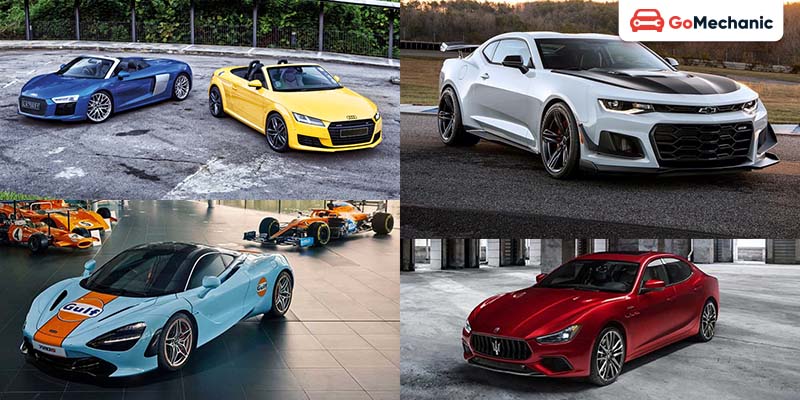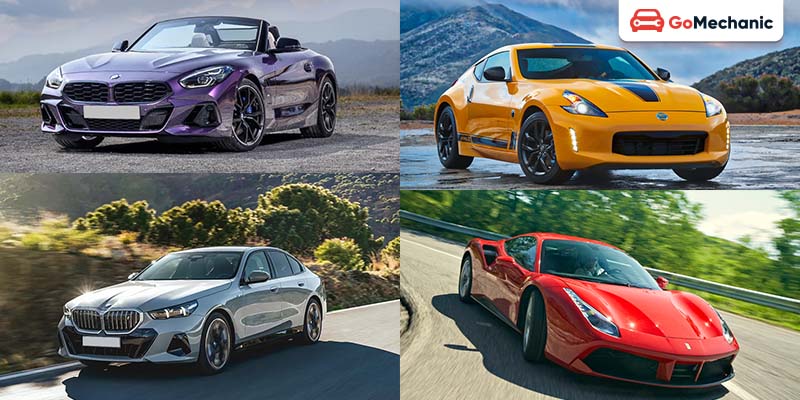In the dynamic world of automobiles, change is constant. Every year, we see new models hitting the streets, boasting the latest technology and design trends. But along with the excitement of what’s to come, there’s also the bittersweet reality of saying goodbye to some beloved models. As we roll into 2024, let’s look at which cars are bidding farewell to the roads.
Introduction
Auto farewells are pivotal events in the automotive industry, marking the discontinuation of specific car models. These events are critical as they highlight shifts in consumer preferences, advancements in automotive technology, or strategic changes by manufacturers. For enthusiasts and the industry, they offer a mix of nostalgia and the prospect of innovation.
Significance of Auto Farewells
- Historical Milestones: Discontinuing a model often symbolises the end of an era, encapsulating the design and technological spirit of its time.
- Economic Indicators: These farewells reflect broader economic changes, such as the shift from sedans to SUVs, demonstrating evolving consumer demands and market trends.
- Technological Progress: As the industry advances, outdated models make way for newer ones featuring cutting-edge technologies like electric drivetrains or enhanced safety systems.
- Collectibility and Nostalgia: Often, discontinued models grow in value and become collectibles, evoking nostalgia and commemorating past automotive eras.
Overview of the Automotive Industry’s Evolution
The automotive industry has transformed significantly since its beginnings in the late 19th century, evolving through several key phases:
- Early Innovations: Introduction of the assembly line by Ford in the early 20th century, making vehicles more affordable and accessible.
- Post-War Expansion: A surge in consumer demand post-World War II led to a variety of new models and technological innovations in car design.
- Globalisation: The latter 20th century saw increased competition as manufacturers from Japan and South Korea entered global markets.
- Environmental and Safety Regulations: Late 20th and early 21st centuries brought heightened environmental and safety regulations, influencing vehicle designs and production methods.
- Rise of Electric Vehicles: More recently, the shift towards sustainability has been marked by the emergence of electric vehicles, spearheaded by companies like Tesla, prompting a rapid response from traditional automakers.
Factors Influencing Discontinuation
The decision to discontinue car models in the automotive industry is driven by a blend of technological, consumer, and economic factors. These influences dictate the life cycle of a car model, signalling when it might be time to phase out in favour of new developments.
Technological Advancements
- Obsolescence of Older Technologies: New technologies make older models outdated, leading to their discontinuation.
- Need for New Tech Integration: Modern features like electric drivetrains and autonomous capabilities often require new platforms, phasing out incompatible older models.
Changes in Consumer Preferences
- Shifts in Market Trends: Changes in consumer interests, such as a preference for SUVs over sedans, drive the discontinuation of less popular models.
- Consumer Demand for Modern Features: As consumers seek advanced features in connectivity and efficiency, models lacking these are phased out.
Economic Considerations
- Cost Efficiency: Discontinuing less profitable models helps allocate resources to more viable options.
- Impact of Market Dynamics: Economic shifts, fuel price changes, or increased competition can diminish a model’s market viability, leading to its discontinuation.
Popular Models Facing Discontinuation

Several renowned car models from major automakers are being phased out, driven by a mix of consumer shifts, economic factors, and technological advancements. Here’s a concise overview of some iconic models and the reasons behind their discontinuation.
Dodge Challenger and Charger
Reasons for Discontinuation:
- Electrification Shift: Transition towards electric vehicles to meet environmental standards.
- Consumer Preferences: Adaptation to changing consumer tastes favouring sustainability.
Audi TT and R8
Reasons for Discontinuation:
- Electric Transition: Shift to an electric-dominated lineup.
- Carbon Footprint Reduction: Elimination of gasoline-powered sports cars to lower emissions.
Chevrolet Camaro
Reasons for Discontinuation:
- Declining Sales: Reduced interest in traditional sports cars.
- SUV Preference: Rising consumer demand for SUVs and trucks.
Maserati Ghibli
Reasons for Discontinuation:
- Product Revamp: Shift to electrified and modern luxury features.
- Market Alignment: Response to the luxury market’s trend towards electrification.
McLaren 720S
Reasons for Discontinuation:
- Technology Update: Introduction of advanced technology and hybrid powertrains.
- Electrification Strategy: Move towards a fully electrified lineup in the future.
Mercedes-AMG GT 4-Door and Mercedes-Benz CLS
Reasons for Discontinuation:
- Portfolio Streamlining: Focus on fewer, more profitable models.
- Shift to Luxury EVs: Emphasis on luxury electric vehicles and SUVs.
Ferrari F8 Tributo and Portofino M
Reasons for Discontinuation:
- Hybrid Introduction: Incorporation of hybrid technologies into new models.
- Sustainable Performance: Combining high performance with greener technologies.
Impact on Consumers
The discontinuation of car models can have varied implications for both current owners and potential buyers. Understanding these impacts can help consumers make more informed decisions about purchasing and maintaining a vehicle.
Impact on Current Owners
Resale Value Fluctuations:
- Increase in Collectibility: Some models may become collectible and increase in value after discontinuation, especially those with a cult following or historical significance.
- Potential Depreciation: Conversely, some discontinued models may depreciate faster if they’re seen as less desirable or if support and parts become scarce.
Availability of Parts and Services:
- Challenges in Maintenance: As manufacturers phase out models, sourcing OEM parts can become more challenging and expensive, potentially increasing the overall cost of ownership.
- Warranty and Support Issues: While warranties should be honoured until their expiry, service support may dwindle over time, making maintenance more cumbersome.
Insurance Costs:
- Potential for Increased Premiums: Insuring a discontinued model might become more expensive if the vehicle is considered at higher risk for repair costs due to the scarcity of parts.
Market Implications for Potential Buyers
Buying Opportunities:
- Lower Purchase Prices: Dealerships might offer discounts on discontinued models to clear out inventories, presenting good buying opportunities.
- Risk of Obsolescence: Buyers must consider the potential challenges with long-term maintenance and part availability.
Future Proofing:
- Consideration of Lifespan: Buyers should assess whether the technological features of the discontinued model will meet their needs long term or quickly become outdated.
- Alternative Choices: It may be wise to consider newer or continuing models that promise ongoing support and updates.
Investment Perspective:
- Potential for Appreciation: Certain discontinued models, especially those from prestigious brands or with unique features, may appreciate in value, making them good investments.
Alternative Models for Discontinued Car Choices

When choosing a replacement for a discontinued model, it’s important to consider detailed specifications to ensure the alternative meets or exceeds the features of the original. Below is a comparative analysis of alternatives based on key specifications such as performance, price, and technology features.
Dodge Challenger and Dodge Charger Alternatives
| Model | Starting Price | Engine Power | Key Features |
| Ford Mustang | $27,000 | Up to 480 hp | Iconic design, advanced infotainment, performance packages |
| Chevrolet Corvette | $60,000 | Up to 495 hp | Mid-engine sports car, superior handling, modern tech amenities |
Audi TT and Audi R8 Alternatives
| Model | Starting Price | Engine Power | Key Features |
| BMW Z4 | $50,000 | Up to 382 hp | Luxury roadster, advanced safety and tech, sporty dynamics |
| Porsche 911 | $100,000 | Up to 443 hp | Prestigious brand, high performance, cutting-edge technology |
Chevrolet Camaro Alternative
| Model | Starting Price | Engine Power | Key Features |
| Nissan 370Z | $30,000 | 332 hp | V6 engine, sports car handling, modern entertainment options |
Maserati Ghibli Alternative
| Model | Starting Price | Engine Power | Key Features |
| BMW 5 Series | $54,000 | Up to 523 hp | Executive luxury, hybrid options, cutting-edge driver assistance |
McLaren 720S Alternative
| Model | Starting Price | Engine Power | Key Features |
| Ferrari 488 GTB | $250,000 | 710 hp | High performance, sophisticated aerodynamics, luxurious interiors |
Mercedes-AMG GT 4-Door and Mercedes-Benz CLS Alternatives
| Model | Starting Price | Engine Power | Key Features |
| Audi A7 | $69,000 | Up to 335 hp | Sportback luxury, advanced MMI system, hybrid options |
| Porsche Panamera | $87,000 | Up to 443 hp | High-performance luxury sedan, innovative cockpit, E-Hybrid variants |
Ferrari F8 Tributo and Portofino M Alternative
| Model | Starting Price | Engine Power | Key Features |
| Lamborghini Huracán | $200,000 | Up to 631 hp | Exotic design, all-wheel drive, state-of-the-art V10 engine |
Conclusion
In 2024, the automotive industry bids farewell to several iconic car models, marking significant shifts in technology, consumer preferences, and economic landscapes. These discontinuations serve as reminders of the industry’s dynamic nature and its constant pursuit of innovation. While evoking nostalgia for enthusiasts, they also present opportunities for investment and reflection on automotive heritage. As the industry continues to evolve, these farewells highlight the ongoing pursuit of excellence and innovation in automotive engineering and design.





